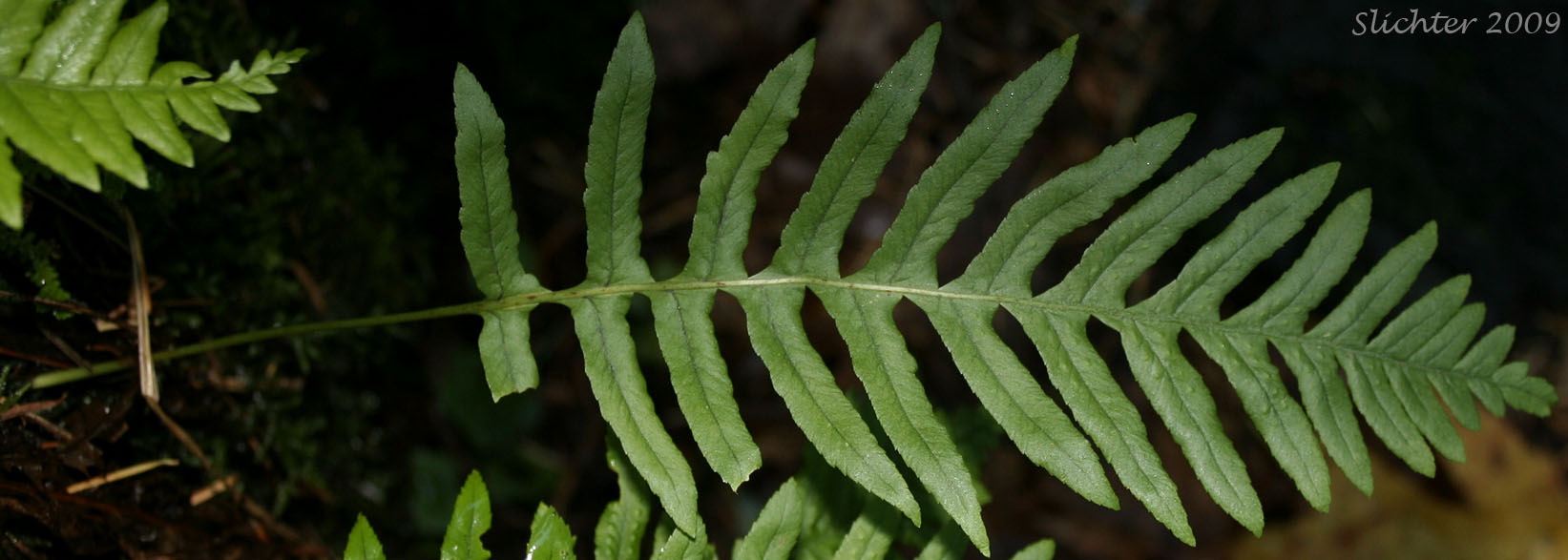Licorice Fern
Polypodium glycyrrhiza
Synonyms: Polypodium aleuticum, Polypodium falcatum, Polypodium occidentale, Polypodium vulgare var. falcatum, Polypodium vulgare var. occidentale

Dorsal frond surface of licorice fern as seen on the steep, north-facing slopes of the McCord Creek Trail in the western Columbia River Gorge.........November 10, 2009.

Ventral frond surface of licorice fern as seen on the steep, north-facing slopes of the McCord Creek Trail in the western Columbia River Gorge.........November 10, 2009.

Licorice ferns growing in thick moss on a bigleaf maple along the Angel's Rest Trail, Columbia River Gorge........February 9, 2010.

Young licorice fern fronds emerging from mossy ground on a cut bank along the highway at Catherine Creek.........September 27, 2013. Note that the pinnae are at least 4 times longer than wide, which helps separate this species from Polypodium hesperium.
Paul Slichter
